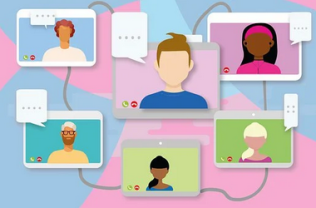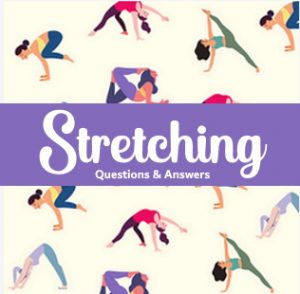Even from the comfort of your own couch, you will be surprised how having a 2-hour meeting on Zoom can be torturous physically and mentally. Zoom fatigue is a term popularized at the onset of the COVID-19 pandemic when folks used virtual platforms to get in contact with friends, colleagues, and relatives whilst working from home.
This burnout phenomenon, as revealed by a 2021 National Geographic survey, affected over 76% of professionals that took part, and was attributed to the overuse of non-verbal cues in conversations.
 The stress, anxiety, or burnout associated with too much use of virtual communication platforms, especially videoconferencing, took a toll on professionals during the pandemic.
The stress, anxiety, or burnout associated with too much use of virtual communication platforms, especially videoconferencing, took a toll on professionals during the pandemic.
Since the beginning of the pandemic, more people have admitted to having experienced Zoom fatigue.
Even though such meetings are conducted virtually in the offices or at the comfort of your home, it turns out they can be mentally and physically exhausting.
Nonetheless, folks employ different coping mechanisms before, during, and after lengthy Zoom meetings, including keeping the sessions short, running to the bathroom, going for a cup of coffee, and the most practical one; stretching.
Stretching, like any form of physical exercise, is a buffer to fatigue. However, how does stretching help with Zoom fatigue? Let’s examine how.
Does Stretching Help Zoom Fatigue?
Stretching helps with Zoom fatigue because it enhances blood and oxygen flow through the body, which promotes a good ergonomic design and productivity. Basically, prolonged virtual meetings or videoconferencing can lead to anxiety, irritation, muscle burnout, and reduced concentration.
Hence, stretching frequently during Zoom meetings is found to combat Zoom fatigue by supplying the working muscles and tissues with blood and nutrients. This increases energy flow while reducing stress and musculoskeletal injuries. It also realigns muscle tissues, which improves postures and focus.
What Is Zoom Fatigue?
Zoom fatigue, also called virtual fatigue, refers to the irritation, worry, and exhaustion you experience every time you hop on a virtual meeting, particularly videoconferencing. The situation makes it difficult to concentrate and perform tasks, and in some cases induces stress, anxiety, and depression.
For most people, Zoom fatigue seems to kick in with lengthy video meetings when their concentration is compromised by physical and mental distractions.
Experts have put forward suggestions to help combat the fatigue, and many have pointed to stretching during meeting recess and after as a viable solution, among others.
Stretching can help keep burnout at bay while maintaining concentration, collaboration, and teamwork.
Symptoms of Zoom Fatigue
Why do folks go ragged during long video calls? What are the telltale signs that this phenomenon has caught up with you? Below are signs that you are suffering from virtual fatigue:
- Eye strain, migraines, and muscle tension.
- Irritability and lack of focus.
- Low concentration spans and forgetfulness.
- Feeling anxious participating in video calls.
- Exhaustion and mental burnout.
- Back pains.
- Low productivity whilst performing tasks.
Causes of Zoom Fatigue
Mental health professionals say videoconferencing can come in handy when dealing with patients who, for one reason or another, cannot commute to the office. However, overuse of virtual platforms, especially in the context of remaining static and staring at cameras and screens for long hours, can be detrimental. It even gets worse for those who lack the training on how to professionally utilize such platforms. Nevertheless, studies seem to point to the following as common causes of Zoom fatigue:
- The overuse and over-reliance on limited cues to communicate.
- The need to retain a fixed sitting position and posture in the view of a limited range camera.
- Needing to use other people’s facial expressions to pick up communication cues.
- Use of small devices for an extended time frame.
- Feeling the pressure to act and look good in front of the camera.
Can Stretching Help Combat Zoom Fatigue?
To better outline the impact of stretching in combating Zoom fatigue, it is vital to first and foremost examine how Zoom meetings differ from regular meetings.
- Unlike Zoom meetings, regular ones tend to be in-person, which gives you a great opportunity at reading verbal and non-verbal cues in firsthand conversations. Besides, they are held in spacious environments and a 3D view of participants is present in the room.
- Unlike regular meetings, Zoom meetings provide unnatural faces of participants on small screens, which limits your ability to decipher conversational non-verbal cues. All these extra strenuous activities bubble up to exhaustion.
- Unlike in regular meetings, Zoom meetings have added pressure of having to maintain posture and look good in the camera. Besides, the fact that everybody is looking at you on the camera stage comes with extra social pressure to perform, which is sometimes nerve-wracking.
Combating Zoom Fatigue Using Stretching and Other Physical Interventions
Scientifically, physical exercise and other forms of active work are known to revamp blood flow in the body, especially the brain. This acts as a buffer to exhaustion and lack of concentration because the individual is actively involved in a task.
However, ocular stress, pain, or fatigue is thought to affect folks who predominantly sit behind computer terminals during work. Even today, most organizations lack proper structure and training that can help workers avoid video conferencing fatigue.
Popularized by the pandemic, this phenomenon is not only a modern reality but has become a colossal concern today. Also, in a bid to address this topic, several Zoom fatigue coping and self-care techniques such as stretching are yielding positive results. Therefore, below is an outline of key steps to incorporating this form of physical revamp into your Zoom meetings.
Preparation:
Start by acknowledging that Zoom fatigue is physically and mentally challenging, and this calls for active spirit and body. Therefore, take a walk to the park to clear up your mind, and come back refreshed before you can hop onto your video call. Scheduling yoga sessions right before your meetings would go a long way too.
Keeping Fatigue at Bay During Meetings:
The last thing you want to happen to you is shifting in and out of focus during Zoom meetings. So, here are some tips to consider during sessions.
- Make occasional shifts in your sitting position and posture. You may not walk away during a video session, but be sure to take advantage of such adjustments.
- Depending on the meeting type, you can get out of your chair during breaks, move around the room, walk up the stairs, or sip on a drink. You can also take some quick breathing exercises, do some light stretching, and engage in other self-revamping activities.
- If need be, you can take planned breaks with your colleagues, and if possible, spend half-hour between sessions for self-care to restore your energy and focus while limiting Zoom fatigue.
Final Thoughts on Does Stretching Help Zoom Fatigue
Zoom fatigue is the anxiety, lack of concentration, and exhaustion linked to conducting meetings using virtual platforms.
The phenomenon is thought to negatively impact mental and physical health. Burnout is a common symptom associated with working from home or at a computer terminal for long hours on the screen.
It is attributed to an individual’s reduced ability to pick up non-verbal cues during virtual meetings and the idea of maintaining one sitting posture in front of a small device’s camera. Therefore, it is vital to intentionally develop coping techniques and changes to your videoconferencing routine.
This is where stretching and other forms of physical intervention come in handy to optimize performance without triggering Zoom fatigue.
The good news is it is very easy for you to test the theory when asking yourself does stretching help zoom fatigue. Why not give stretching a try at your next virtual meeting and see how much better you feel?
